Home>Interior Design>Home Office Productivity Tips: 13 Ways To Work Effectively At Home
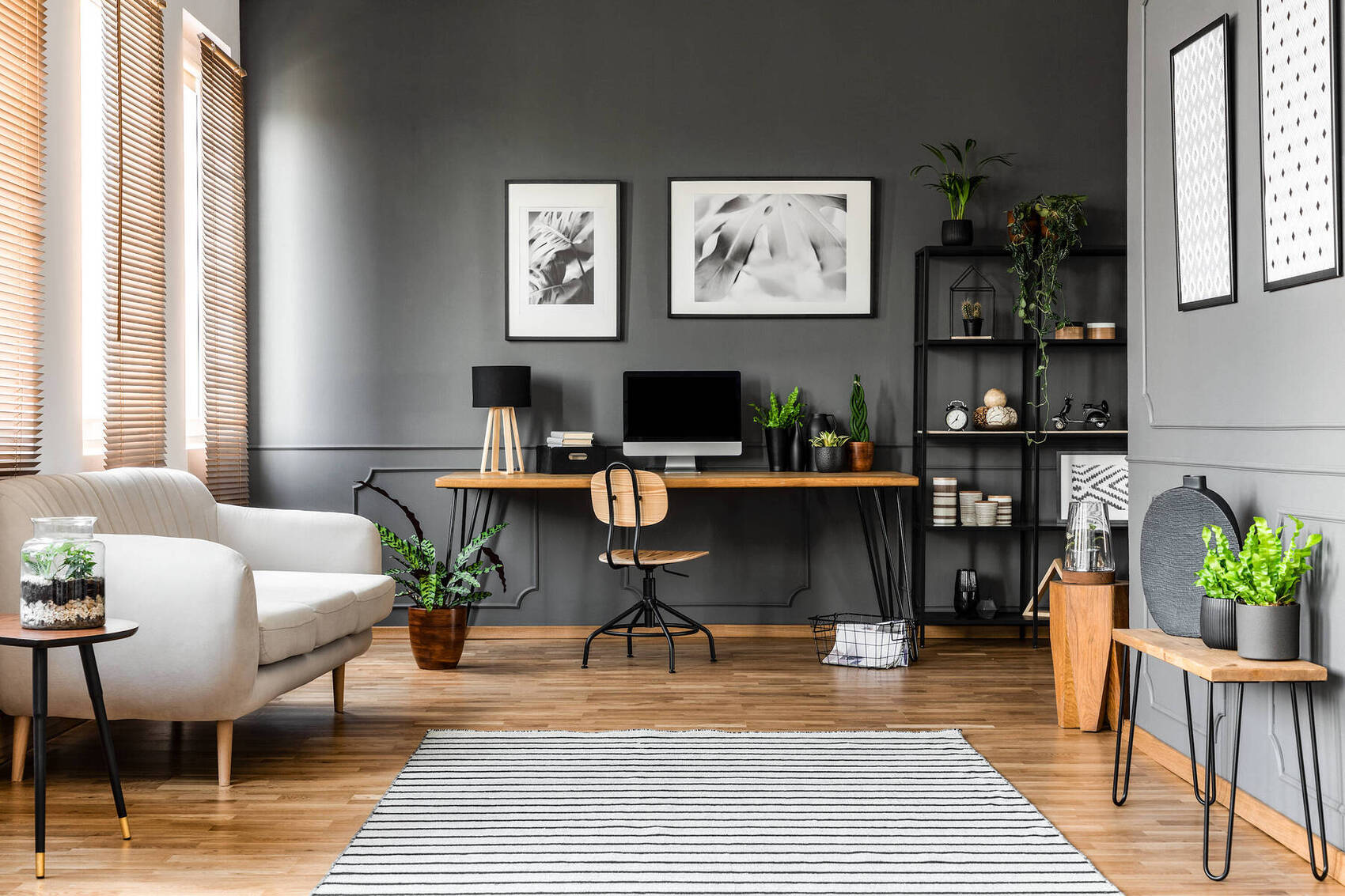

Interior Design
Home Office Productivity Tips: 13 Ways To Work Effectively At Home
Modified: November 2, 2024
Discover 13 effective ways to enhance your home office productivity with these interior design tips. Achieve maximum focus and efficiency while working from home.
(Many of the links in this article redirect to a specific reviewed product. Your purchase of these products through affiliate links helps to generate commission for Storables.com, at no extra cost. Learn more)
Introduction
Welcome to the world of working from home! Whether you are a freelancer, a remote worker, or someone who has recently transitioned to a home office setup, it’s important to create an environment that promotes productivity. Working from the comfort of your own home offers flexibility and convenience, but it also comes with its unique set of challenges. In this article, we will explore 13 effective tips to help you maximize your productivity and create a successful home office space.
With the increasing popularity of telecommuting and the rise of digital nomads, the home office has become a symbol of the modern workplace. However, working from home requires discipline and organization to ensure that you stay focused and deliver high-quality work. By implementing the strategies we will discuss, you can create a conducive and efficient work environment right in the comfort of your own home.
Whether you’re new to remote work or looking to improve your current setup, these tips will help you optimize your productivity and make the most out of your home office. From creating a designated workspace to practicing self-care and mental wellness, we will cover a wide range of strategies to ensure that you can work effectively and achieve your goals while maintaining a healthy work-life balance.
So, whether you’re working on a creative project, conducting research, managing a team, or simply tackling your daily tasks, read on to discover 13 ways to work effectively at home. Let’s dive in and transform your home office into a hub of productivity!
Key Takeaways:
- Create a designated workspace to establish a clear boundary between personal and professional life, promoting focus and efficiency.
- Prioritize self-care, maintain a healthy work-life balance, and seek support to enhance overall well-being and productivity while working from home.
Create a Designated Workspace
One of the key ingredients for a successful home office is having a designated workspace. While it may be tempting to work from your couch or bed, creating a separate area for work helps to establish a clear boundary between your professional and personal life.
Choose a quiet and well-lit area in your home that is free from distractions. It could be a spare room, a corner of your living room, or even a dedicated home office if you have the space. Make sure your workspace is comfortable and ergonomically designed to prevent strain and fatigue. Invest in a good quality chair and set up your desk at the correct height to promote good posture.
Personalize your workspace to make it feel motivational and inspiring. Decorate it with plants, artwork, or items that ignite creativity and spark joy. Organize your supplies and keep everything you need within arm’s reach, so you can stay focused and avoid interruptions.
Key Points:
- Create a separate area in your home for your work.
- Choose a quiet and well-lit space.
- Invest in comfortable and ergonomic furniture.
- Personalize your workspace to make it motivating and inspiring.
- Keep your supplies organized and easily accessible.
By establishing a designated workspace, you create a physical separation between your personal and professional life, which helps you mentally transition into work mode. This dedicated space sets the stage for increased focus, productivity, and efficiency.
Establish a Routine
When working from home, it’s easy for your schedule to become disorganized and for work to spill over into your personal time. That’s why it’s crucial to establish a routine that structures your day and sets clear boundaries between work and leisure.
Start by determining your most productive hours and aligning your work schedule accordingly. If you’re a morning person, you may want to tackle your most demanding tasks first thing in the morning. If you’re more productive in the afternoon or evening, plan your work accordingly.
Set specific working hours and stick to them as much as possible. This will help you create a sense of consistency and structure. Communicate your availability and working hours to your colleagues and clients, so they know when they can reach you for collaboration or assistance.
When establishing your routine, be sure to include regular breaks to rest and recharge. A common guideline is the Pomodoro Technique, where you work for 25 minutes and take a five-minute break. After four such cycles, take a longer break of around 15 to 20 minutes.
Key Points:
- Determine your most productive hours and align your work schedule accordingly.
- Set specific working hours and communicate them to your colleagues and clients.
- Include regular breaks in your routine for rest and rejuvenation.
- Consider using time management techniques like the Pomodoro Technique.
By establishing a routine, you create structure and eliminate the ambiguity that can come with working from home. A consistent schedule helps you stay on track, manage your time effectively, and maintain a healthy work-life balance.
Set Clear Goals and Prioritize Tasks
Setting clear goals and priorities is essential in maximizing your productivity while working from home. Without a clear direction, it’s easy to get overwhelmed and lose focus. Start each day or week by setting specific goals that align with your overarching objectives.
Break down your goals into smaller, actionable tasks. This helps you stay organized and gives you a sense of progress as you complete each task. Prioritize your tasks based on their importance and deadline, tackling the most critical ones first.
Consider using productivity tools or project management software to help you track your tasks and stay on top of deadlines. These tools can provide you with reminders, notifications, and visual representations of your progress, helping you stay focused and productive.
When setting goals and prioritizing tasks, it’s important to be realistic and avoid overloading yourself with too much work. Be sure to allocate sufficient time for each task and build in buffer time to handle unexpected interruptions or delays.
Key Points:
- Set clear goals that align with your objectives.
- Break down goals into smaller, actionable tasks.
- Prioritize tasks based on importance and deadlines.
- Use productivity tools or project management software to track your tasks.
- Be realistic and avoid overloading yourself with too much work.
By setting clear goals and prioritizing tasks, you establish a roadmap for your work and ensure that you are focusing on high-impact activities. This clarity allows you to work more efficiently and make progress towards achieving your goals.
Eliminate Distractions
Distractions can significantly hinder your productivity when working from home. It’s essential to create an environment that minimizes interruptions and helps you maintain focus on your tasks. Here are some strategies to eliminate distractions and create a conducive work atmosphere:
Designate a dedicated workspace: As mentioned earlier, having a designated workspace helps create a clear boundary between work and personal life. It also signals to others in your household that you’re in work mode, reducing the likelihood of interruptions.
Minimize noise: Noise can be a major distraction. If you live in a noisy neighborhood or have family members or pets at home, consider using noise-cancelling headphones or playing soft instrumental music to create a more peaceful and focused environment.
Turn off notifications: Constant notifications from emails, social media, and messaging apps can disrupt your concentration. To avoid temptation, turn off or silence notifications during your dedicated work hours. Instead, schedule specific times to check and respond to messages.
Establish boundaries with others: Communicate your working hours and boundaries to family members or roommates, so they know when you should not be disturbed. If possible, create physical barriers like closed doors or use visual indicators to indicate when you’re busy or in a meeting.
Manage online distractions: The internet can be a black hole of distractions. Use browser extensions or apps that block access to time-wasting websites or social media platforms during your work hours. This way, you reduce the temptation to wander off-task.
Take care of household chores: It’s easy to get distracted by household chores when working from home. To prevent this, allocate specific times outside of your work hours to attend to these tasks. Having a clean and organized environment can also contribute to a more focused mindset.
Stay accountable: Find an accountability partner or join an online community of remote workers. This can provide support and motivation, as well as help you stay on track with your tasks.
Key Points:
- Create a designated workspace and minimize distractions.
- Use noise-cancelling headphones or soft instrumental music to minimize noise.
- Turn off or silence notifications during work hours.
- Communicate boundaries with family members or roommates.
- Use browser extensions or apps to block access to distracting websites.
- Schedule specific times for household chores.
- Find an accountability partner or join a remote work community.
By implementing these strategies, you can significantly reduce distractions and create an environment that promotes focus and productivity. With fewer interruptions, you can dedicate your full attention to your work and achieve better outcomes.
Dress for Success
When working from home, it can be tempting to stay in your pajamas or loungewear all day. However, the way you dress can have a significant impact on your mindset and productivity. Taking the time to dress up for work, even if you’re not leaving the house, can help create a professional and focused mindset. Here’s why dressing for success matters:
Mental shift: When you change out of your sleepwear and into work attire, it serves as a signal to your brain that it’s time to shift into work mode. It helps separate your personal and professional life, allowing you to approach your tasks with a sense of purpose.
Confidence and motivation: Dressing up can boost your confidence and motivation. When you look professional, you feel more capable and ready to take on challenges. It can also enhance your self-esteem and the way you present yourself in virtual meetings or client interactions.
Creative expression: Your outfit is a form of self-expression, and it can have an impact on your mindset and creativity. When you dress up and put effort into your appearance, it can inspire a sense of creativity and innovation in your work.
Professionalism: If you have video conferences or virtual meetings with colleagues or clients, dressing professionally shows respect and demonstrates that you take your work seriously. It helps maintain a level of professionalism even in a remote setting.
Key Points:
- Dress up for work, even when working from home.
- Changing into business attire signals a mental shift into work mode.
- Dressing professionally boosts confidence and motivation.
- Express your creativity through your outfit.
- Professional attire is important for video conferences and virtual meetings.
While you don’t need to wear a formal suit or dress, choose outfits that are comfortable yet professional. This can mean putting on a business-casual outfit or simply dressing slightly more polished than you would on a lazy day. By dressing for success, you set the tone for a productive day and enhance your overall work experience.
Take Regular Breaks
When working from home, it’s important to remember that breaks are not a luxury but a necessity. Taking regular breaks throughout the day can actually improve your productivity and overall well-being. Here’s why breaks are crucial and how you can make the most of them:
Prevent burnout: Continuous hours of work without breaks can lead to burnout, decreased productivity, and increased stress levels. Taking short breaks allows your brain to recharge and reset, ensuring that you can maintain a high level of focus and performance throughout the day.
Enhance creativity and problem-solving: Stepping away from your work for a few minutes can actually boost your creativity and problem-solving abilities. During a break, your mind has the opportunity to wander, make new connections, and gain fresh insights. You might find that a solution to a problem suddenly pops into your head during a leisurely stroll or while taking a short mindfulness break.
Improve physical health: Sitting for prolonged periods can have negative effects on your physical health. Taking regular breaks allows you to stretch, move around, and engage in physical activity. Incorporate simple exercises or stretches into your break routine to prevent stiffness and promote better circulation.
Focus and time management: Contrary to popular belief, taking breaks does not mean wasting time. Breaks can actually improve your focus by preventing mental fatigue and improving attention span. When you return from a break, you’ll often find yourself more energized and able to tackle tasks more efficiently.
Key Points:
- Regular breaks prevent burnout and improve productivity.
- Breaks enhance creativity and problem-solving abilities.
- Moving and stretching during breaks improves physical health.
- Breaks help improve focus and time management.
To make the most of your breaks, it’s important to use them intentionally. Step away from your workspace and engage in activities that relax and rejuvenate you. This could involve going for a short walk, practicing mindfulness or meditation, reading a book, or engaging in a hobby you enjoy. Experiment with different break activities to find what works best for you.
Remember, breaks are not a sign of laziness. They are an essential part of maintaining productivity and ensuring that you can sustain your focus and energy throughout the day. Embrace the power of breaks and see how they can transform your work-from-home experience.
Use Time-Management Techniques
Time management is crucial when working from home to ensure that you stay organized, meet deadlines, and make the most of your productive hours. Here are some effective time-management techniques to help you optimize your workday:
Plan your day: Start each day by planning your tasks and creating a schedule. Prioritize your most important and time-sensitive tasks, and allocate dedicated time slots for each. Having a clear plan of action helps you stay focused and minimizes the chances of getting overwhelmed.
Use time-blocking: Time-blocking is a technique where you assign specific blocks of time for different tasks or activities. By setting aside dedicated time for specific tasks, you can ensure that you stay focused and complete them without interruptions. It also provides structure to your day and helps you manage your time effectively.
Break tasks into smaller chunks: Large tasks can be overwhelming. Break them down into smaller, more manageable chunks. This not only makes them less daunting but also allows you to track your progress and stay motivated as you complete each part of the task.
Utilize productivity tools: There are countless productivity tools available that can help you manage your time more efficiently. From task management apps like Todoist and Trello to project management software like Asana and Monday.com, find tools that work best for you. These tools can help you track your tasks, set reminders, and collaborate with team members.
Avoid multitasking: While it may seem like multitasking can boost productivity, it often leads to decreased focus and lower quality of work. Instead, focus on one task at a time and give it your full attention. This allows you to complete tasks more efficiently and produce higher quality results.
Take advantage of technology: Use technology to automate and streamline repetitive tasks. For example, schedule email filters to categorize and prioritize your emails, use calendar reminders to keep track of deadlines, and utilize productivity apps to help you stay organized.
Key Points:
- Create a daily plan and prioritize tasks.
- Use time-blocking to allocate dedicated time for specific tasks.
- Break large tasks into smaller, more manageable chunks.
- Utilize productivity tools and technology to streamline your work.
- Avoid multitasking and focus on one task at a time.
By implementing these time-management techniques, you can better manage your workload and make the most efficient use of your time. As a result, you’ll be able to accomplish more, meet deadlines, and maintain a sense of control and balance in your work-from-home routine.
Set specific work hours and stick to them. This will help you create a routine and maintain a healthy work-life balance while working from home.
Utilize Technology Tools
When working from home, technology can be your best friend. There are a plethora of tools available that can help you stay organized, communicate effectively, and collaborate with team members. Here are some essential technology tools to consider:
Communication tools: Effective communication is vital when working remotely. Utilize tools like Slack, Microsoft Teams, or Google Hangouts to communicate with colleagues in real-time. These platforms allow for quick messaging, file sharing, and video calls, helping you stay connected and collaborate seamlessly.
Project management software: Project management tools like Asana, Trello, or Monday.com are invaluable for keeping track of tasks, deadlines, and project progress. These tools enable you to assign tasks, set priorities, and monitor the status of projects, keeping everyone on the same page and ensuring seamless collaboration.
Cloud storage solutions: Storing your files in the cloud ensures easy access, backup, and sharing. Platforms like Google Drive, Dropbox, or Microsoft OneDrive allow you to store and access your files from anywhere, collaborate with teammates on shared documents, and maintain version control.
Time tracking tools: If you need to track and manage your time effectively, consider using time-tracking tools like Toggl or RescueTime. These tools help you monitor how you spend your time, track productivity, and identify areas for improvement.
Virtual meeting software: Virtual meetings are a crucial part of remote work. Platforms like Zoom, Microsoft Teams, or Google Meet enable you to host video conferences, conduct presentations, and collaborate with team members no matter where they are located. Familiarize yourself with these tools to enhance communication and collaboration during virtual meetings.
Task management apps: Task management apps like Todoist, Wunderlist, or Any.do are great for keeping track of your individual tasks and personal to-do lists. They help you stay organized, set priorities, and manage your workload effectively.
Key Points:
- Utilize communication tools for real-time collaboration.
- Use project management software to track tasks and project progress.
- Store and access files using cloud storage solutions.
- Track and manage your time with time tracking tools.
- Make use of virtual meeting software for seamless communication.
- Manage your tasks and to-do lists with task management apps.
By leveraging these technology tools, you can enhance your productivity, streamline communication, and collaborate effectively with your team members, regardless of their physical location. Embrace the power of technology to optimize your work-from-home experience.
Read more: How Effective Are Home Alarm Systems
Maintain a Healthy Work-Life Balance
When working from home, it can be challenging to maintain a healthy work-life balance. The lines between work and personal life can easily blur, leading to burnout and decreased overall well-being. Here are some strategies to help you strike a balance and prioritize self-care:
Set boundaries: Establish clear boundaries between your work and personal life. Define specific working hours and communicate them to your colleagues and family members. Avoid the temptation to work beyond your designated work hours, and resist the urge to check emails or complete tasks during your personal time.
Create a routine: Establishing a routine is crucial in maintaining work-life balance. Designate specific times for work, breaks, and personal activities. Stick to your schedule as much as possible to ensure that you allocate time for both work and leisure activities.
Disconnect from work: At the end of your workday, make a conscious effort to disconnect and mentally switch off from work. Create a ritual or transition activity that helps you shift your focus and signal the end of the workday. This can be as simple as going for a walk, engaging in a hobby, or spending quality time with loved ones.
Prioritize self-care: Make self-care a priority in your daily routine. Incorporate activities that promote physical and mental well-being, such as exercise, meditation, reading, or spending time in nature. Taking care of yourself allows you to recharge, reduces stress, and enhances your overall productivity.
Separate your workspace: Designate a specific area for work and avoid using that space for personal activities when you’re not working. Physically separating your workspace from your living space helps create a psychological boundary, allowing you to mentally disconnect from work during your personal time.
Communicate and seek support: Regularly communicate with your colleagues and supervisor about your workload and any challenges you may be facing. Seek support and collaborate with team members when needed. Sharing your concerns and seeking guidance can help alleviate stress and prevent burnout.
Key Points:
- Set clear boundaries between work and personal life.
- Create a routine that includes dedicated time for work and leisure activities.
- Disconnect from work at the end of the day.
- Prioritize self-care activities for physical and mental well-being.
- Separate your workspace from your living space.
- Communicate and seek support from colleagues and supervisors.
Remember, maintaining a healthy work-life balance is essential for your overall well-being and long-term success. By implementing these strategies, you can ensure that work doesn’t consume your entire life and that you have time for activities that bring you joy and fulfillment.
Stay Organized
When working from home, staying organized is key to maintaining productivity and staying on top of your tasks. Being organized helps you manage your time effectively, reduces stress, and allows for a smoother workflow. Here are some tips to help you stay organized in your home office:
Create a schedule: Establish a daily or weekly schedule that outlines your tasks, deadlines, and appointments. Use a digital calendar or a planner to keep track of your work commitments and personal obligations. Having a visual representation of your schedule helps you prioritize tasks and stay organized.
Use a task management system: Utilize a task management system or app to keep track of your to-do list. Break down your tasks into actionable steps, set deadlines, and prioritize them based on importance. Regularly review and update your task list to ensure nothing falls through the cracks.
Organize your digital files: Maintain a well-organized system for your digital files. Create folders and subfolders to categorize your documents, ensuring easy access and efficient retrieval. Adopt a consistent naming convention for your files to eliminate confusion and save time when searching for specific items.
Keep a clean workspace: A cluttered workspace can hinder productivity and increase distractions. Regularly declutter your desk and only keep essential items within reach. Use storage solutions, such as drawers, bins or organizers, to keep your supplies neatly organized and out of sight when not in use.
Time-block your tasks: Assign specific blocks of time for different tasks or types of work. This technique helps you allocate dedicated time for each task and prevents them from blending together. By time-blocking, you can ensure that you give your full attention to each task in a focused manner.
Streamline your email management: Develop an efficient system for managing your emails. Set up folders or labels to organize your emails according to specific categories or projects. Use filters to automatically sort incoming emails into relevant folders, reducing clutter in your inbox. Schedule specific times to check and respond to emails, rather than constantly monitoring them throughout the day.
Key Points:
- Create a schedule to manage your time effectively.
- Use a task management system to track your to-do list.
- Organize your digital files with folders and a consistent naming convention.
- Maintain a clean and clutter-free workspace.
- Time-block your tasks to ensure dedicated focus.
- Develop an efficient system for managing your emails.
By implementing these organizational strategies, you can enhance your efficiency, reduce stress, and improve your overall work-from-home experience. Staying organized allows you to stay on top of your responsibilities, meet deadlines, and maintain a sense of control over your work environment.
Communicate Effectively with Colleagues
Effective communication is vital when working remotely, as it helps to foster collaboration, maintain relationships, and ensure that everyone is on the same page. Here are some tips to help you communicate effectively with your colleagues while working from home:
Use clear and concise language: When communicating through emails, chats, or video calls, strive to be clear and concise in your messages. Avoid using jargon or overly complex language. Be mindful of the tone and intention behind your words to ensure that your message is understood as intended.
Use the right communication channels: Different tasks or situations may warrant different communication channels. Email is ideal for longer, more formal messages, while instant messaging platforms like Slack or Microsoft Teams are better for quick questions or updates. Video calls are great for more interactive discussions or brainstorming sessions.
Set regular check-in meetings: Schedule regular check-in meetings with your team or manager to discuss ongoing projects and address any concerns. These meetings can help establish clear expectations, provide updates on progress, and address any challenges or roadblocks. Regular communication helps maintain a sense of connection and ensures alignment within the team.
Practice active listening: When engaging in conversations or virtual meetings, practice active listening. Pay attention to what others are saying, ask clarifying questions, and provide thoughtful responses. Avoid multitasking or interrupting, as it can lead to misunderstandings and inhibit effective communication.
Provide regular updates: Keeping your colleagues informed about the progress of your work is crucial when working remotely. Provide regular updates on the status of your projects or tasks. This helps foster transparency, enhances collaboration, and ensures that everyone is aware of any changes or potential delays.
Be responsive: Promptly respond to emails, messages, or requests from your colleagues. Even if you are unable to provide an immediate answer, acknowledge the communication and provide a timeframe for when you will be able to respond. Keeping the lines of communication open and being responsive helps maintain strong working relationships.
Key Points:
- Use clear and concise language in your communication.
- Choose the right communication channel for each task or situation.
- Schedule regular check-in meetings to discuss projects and address concerns.
- Practice active listening to ensure effective communication.
- Provide regular updates on the progress of your work.
- Respond promptly to emails, messages, and requests from colleagues.
By implementing these communication strategies, you can foster effective collaboration, maintain strong working relationships, and ensure that goals and expectations are clearly communicated. Effective communication plays a vital role in the success of a remote team and contributes to a productive and harmonious work-from-home environment.
Seek Support and Collaboration
Working from home doesn’t mean you have to work in isolation. Seeking support and collaboration from your colleagues and peers can greatly enhance your productivity and overall work experience. Here are some ways you can foster support and collaboration while working remotely:
Reach out for help: Don’t hesitate to reach out to your teammates or superiors when you need assistance or guidance. Whether it’s a technical issue, a challenging task, or simply needing someone to brainstorm ideas with, your colleagues are there to support you. Engage in open and transparent communication to establish a sense of trust and encourage a supportive work environment.
Participate in virtual meetings: Virtual meetings are an opportunity to connect with your team members and collaborate on projects. Come prepared with your ideas and actively participate in discussions. Share your expertise, provide constructive feedback, and ask questions to facilitate productive conversations. Virtual meetings are also an ideal platform for team bonding and building relationships.
Utilize collaboration tools: Take advantage of collaboration tools and platforms that enable real-time document sharing and editing. Tools like Google Docs, Microsoft Office 365, or Dropbox Paper allow multiple team members to work on the same document simultaneously. This fosters collaboration, enhances productivity, and streamlines the review and editing process.
Create virtual communities or chat groups: Consider establishing virtual communities or chat groups where you and your colleagues can engage in casual conversations, share resources, or seek advice. These communities foster a sense of belonging and enable informal collaboration, even when you’re physically distant from your coworkers.
Provide and seek feedback: Feedback is a valuable tool for growth and improvement. Actively seek feedback from your colleagues on your work, and be open to providing constructive feedback to others. Constructive feedback helps identify areas for improvement, encourages collaboration, and strengthens team dynamics.
Collaborate on shared projects: Actively look for opportunities to collaborate with your colleagues on shared projects. Collaborative efforts often lead to more innovative and comprehensive outcomes compared to working in isolation. Engage in open discussions, share ideas, and divide tasks to leverage each other’s strengths.
Key Points:
- Reach out to colleagues for assistance and guidance.
- Participate actively in virtual meetings to collaborate with team members.
- Utilize collaboration tools for real-time document sharing and editing.
- Create virtual communities or chat groups to foster informal collaboration.
- Seek and provide constructive feedback to enhance growth and improvement.
- Look for opportunities to collaborate with colleagues on shared projects.
By seeking support and actively collaborating with your colleagues, you can tap into a wealth of knowledge and expertise. Collaborative efforts not only lead to better outcomes but also foster a sense of camaraderie and teamwork. Working together, even remotely, can help you accomplish more and create a more enriching work experience.
Practice Self-Care and Mental Wellness
When working from home, it’s essential to prioritize self-care and mental wellness to maintain a healthy work-life balance and overall well-being. Taking care of your physical and mental health allows you to perform at your best and avoid burnout. Here are some self-care practices to incorporate into your work-from-home routine:
Establish a self-care routine: Set aside dedicated time each day for self-care activities that rejuvenate and relax you. This can include exercise, meditation, yoga, reading, or engaging in hobbies you enjoy. Prioritize activities that help you de-stress and recharge, as self-care is crucial for maintaining productivity and mental well-being.
Take regular breaks: As mentioned earlier, breaks are essential for maintaining productivity. Use your breaks to engage in self-care activities, such as going for a walk, practicing deep breathing exercises, or enjoying a healthy snack. These short breaks allow you to refocus and come back to your work with a renewed sense of energy.
Practice mindfulness: Incorporate mindfulness into your day-to-day routine. Mindfulness involves being fully present in the moment and paying attention to your thoughts, emotions, and physical sensations. This can be done through meditation, deep breathing exercises, or simply taking a few moments to observe your surroundings and be aware of your thoughts and feelings.
Connect with others: Despite physical distance, it’s important to maintain social connections. Take time to connect with friends, family, and colleagues through phone calls, video chats, or virtual hangouts. Engaging in meaningful conversations and fostering social connections can boost your mood and overall well-being.
Set boundaries: Establish boundaries between work and personal life to prevent work from consuming your entire day. Set specific working hours and resist the urge to constantly check work-related emails or messages outside of those hours. Protecting your personal time allows you to rest, spend time with loved ones, and engage in activities that bring you joy.
Seek support when needed: If you’re feeling overwhelmed or experiencing increased stress, don’t hesitate to seek support from friends, family, or mental health professionals. Many organizations offer employee assistance programs or counseling services that can provide guidance and support. It’s important to prioritize your mental well-being and reach out for help when needed.
Key Points:
- Establish a self-care routine that includes activities to rejuvenate and relax you.
- Take regular breaks to engage in self-care practices.
- Practice mindfulness to stay present and reduce stress.
- Maintain social connections through virtual interactions.
- Set boundaries between work and personal life.
- Seek support from friends, family, or mental health professionals when needed.
Remember, taking care of yourself is essential for your overall well-being. By prioritizing self-care and mental wellness, you can maintain a healthy work-life balance, increase productivity, and experience greater satisfaction in your work-from-home journey.
Conclusion
Working from home offers unparalleled flexibility and convenience, but it also comes with its unique set of challenges. To maximize productivity and create a successful home office space, it’s important to implement effective strategies and prioritize key aspects of remote work. This includes creating a designated workspace, establishing a routine, setting clear goals, and maintaining a healthy work-life balance.
By following the tips outlined in this article, you can create a productive and engaging work environment right in the comfort of your own home. From eliminating distractions and dressing for success to practicing self-care and seeking support, each aspect contributes to a holistic and optimized work-from-home experience.
Remember that communication and collaboration are key, even when working remotely. Utilize technology tools, communicate effectively with colleagues, and seek support and collaboration to harness the power of teamwork, regardless of physical distance.
Finally, take care of your physical and mental well-being. Prioritize self-care activities, take regular breaks, and seek assistance or counseling when needed. Your health and well-being are essential for long-term success and happiness.
As you continue your work-from-home journey, remember that every individual’s experience is unique. Experiment with different strategies, adapt them to fit your needs, and find what works best for you. With determination, focus, and a balanced approach, you can thrive in your home office and achieve your professional goals while enjoying the benefits of remote work.
Frequently Asked Questions about Home Office Productivity Tips: 13 Ways To Work Effectively At Home
Was this page helpful?
At Storables.com, we guarantee accurate and reliable information. Our content, validated by Expert Board Contributors, is crafted following stringent Editorial Policies. We're committed to providing you with well-researched, expert-backed insights for all your informational needs.
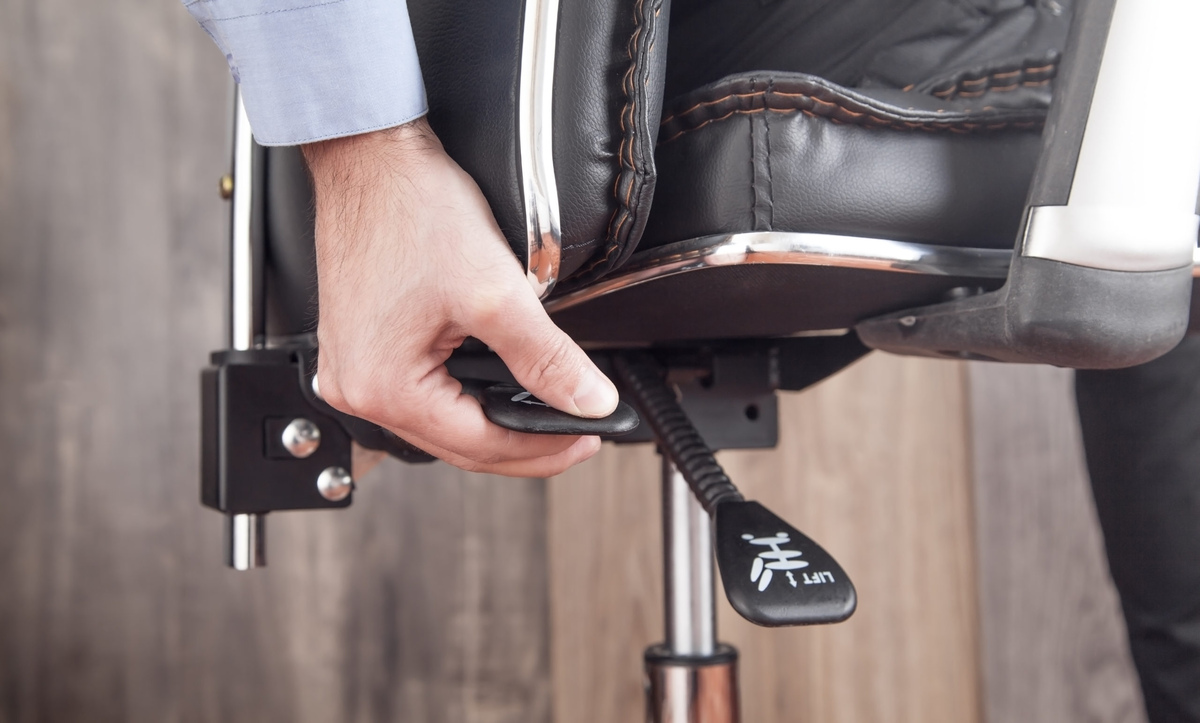
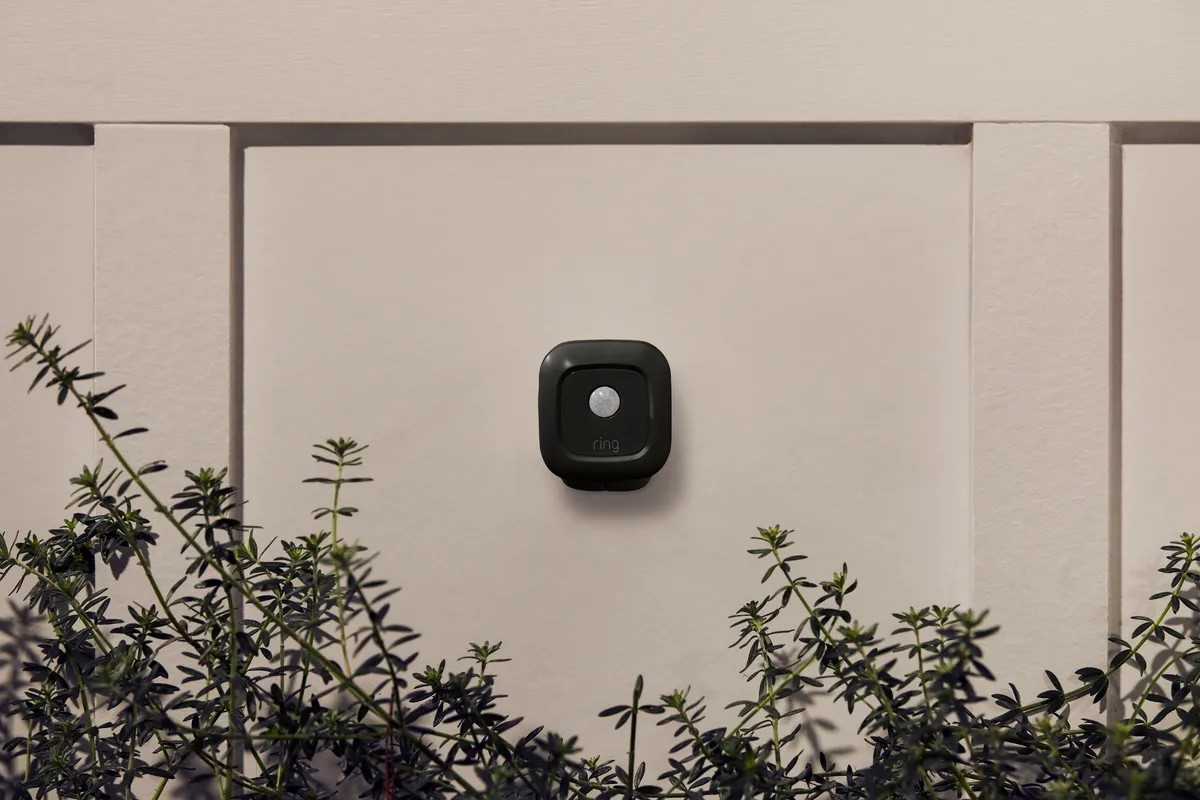


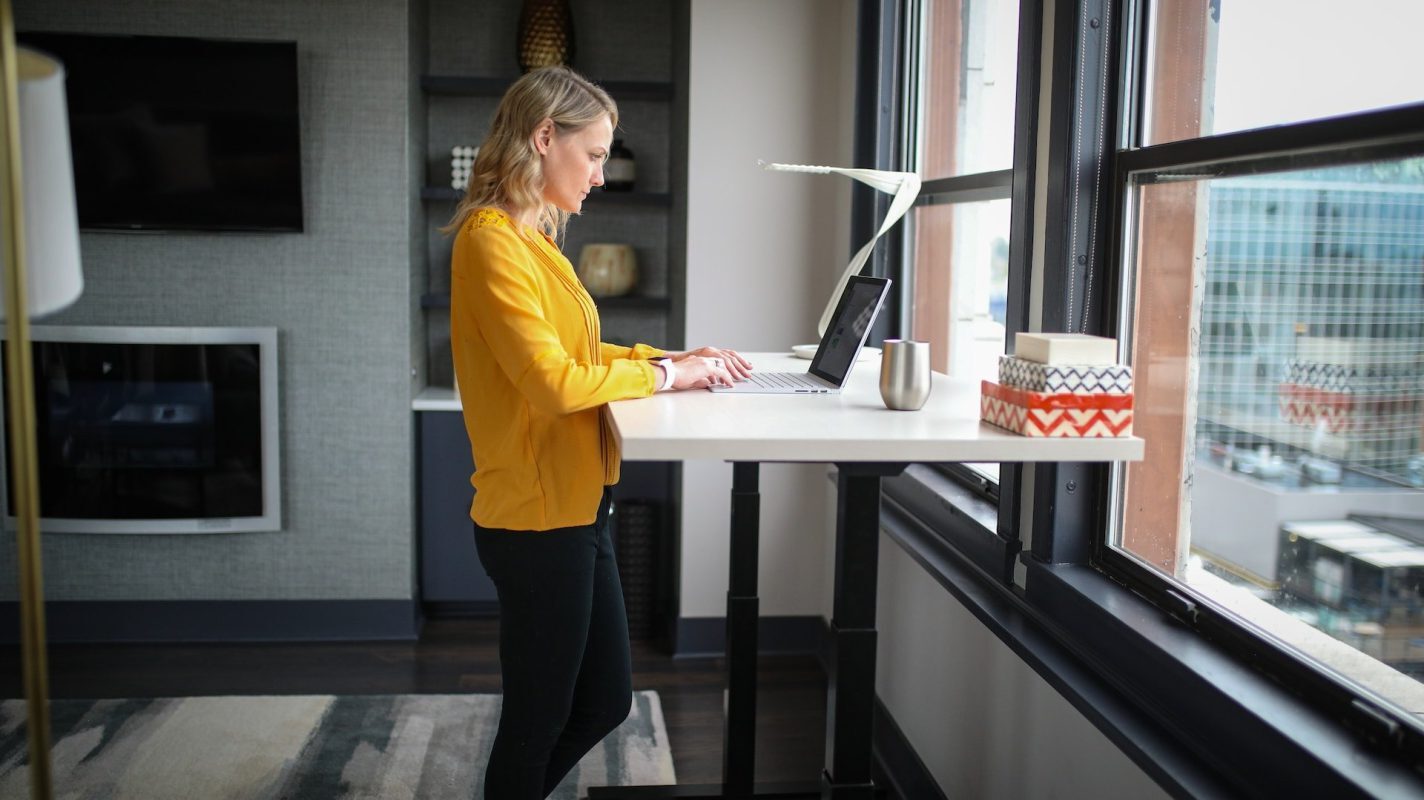
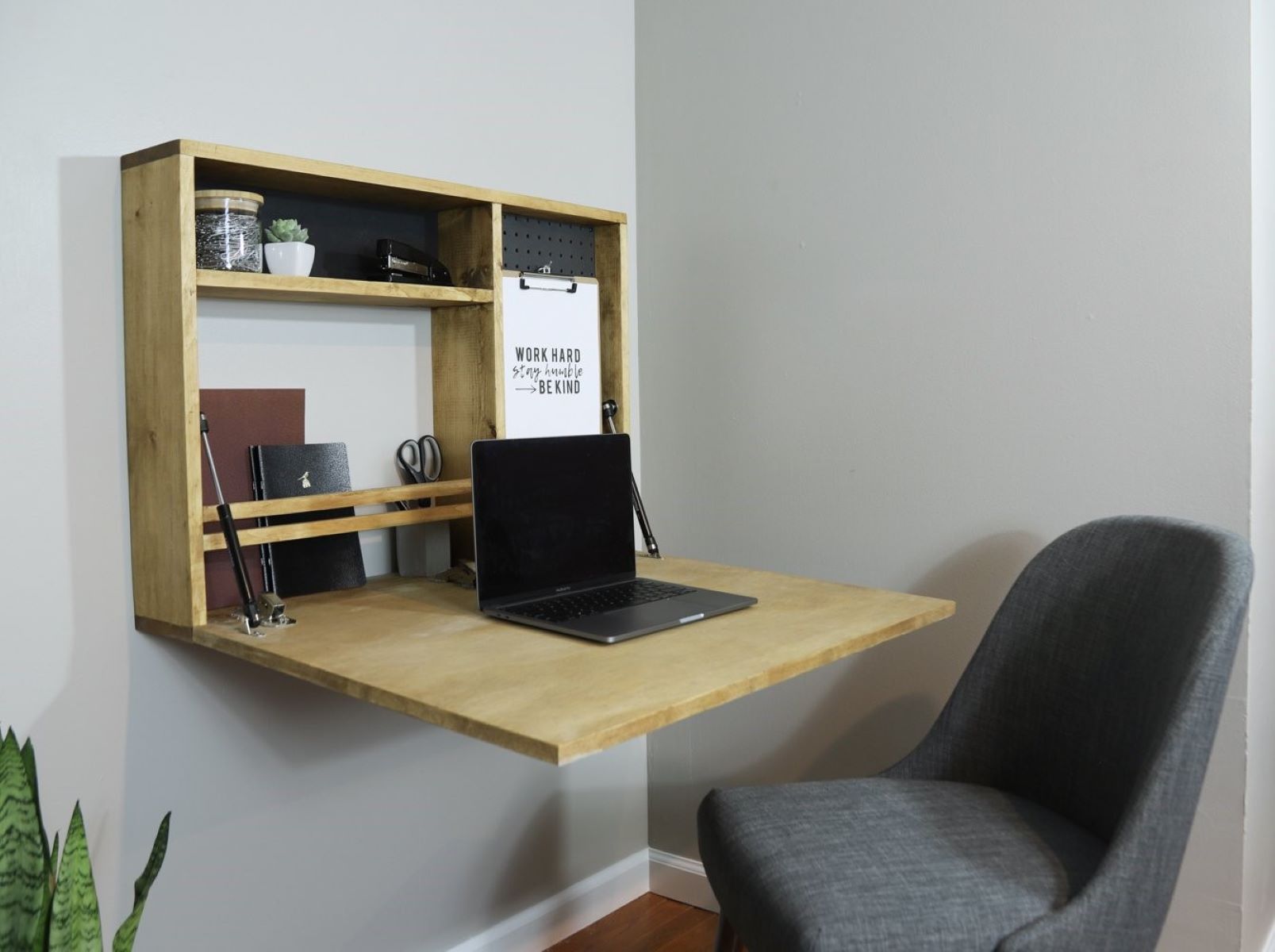







0 thoughts on “Home Office Productivity Tips: 13 Ways To Work Effectively At Home”